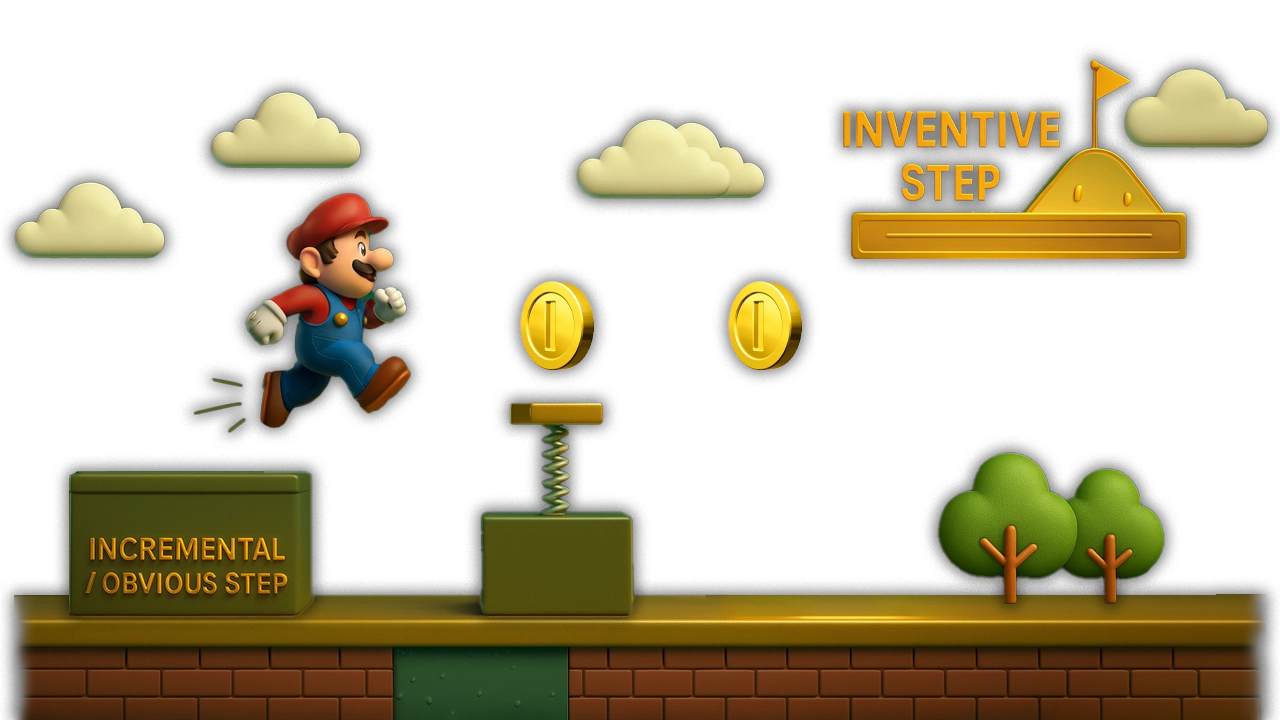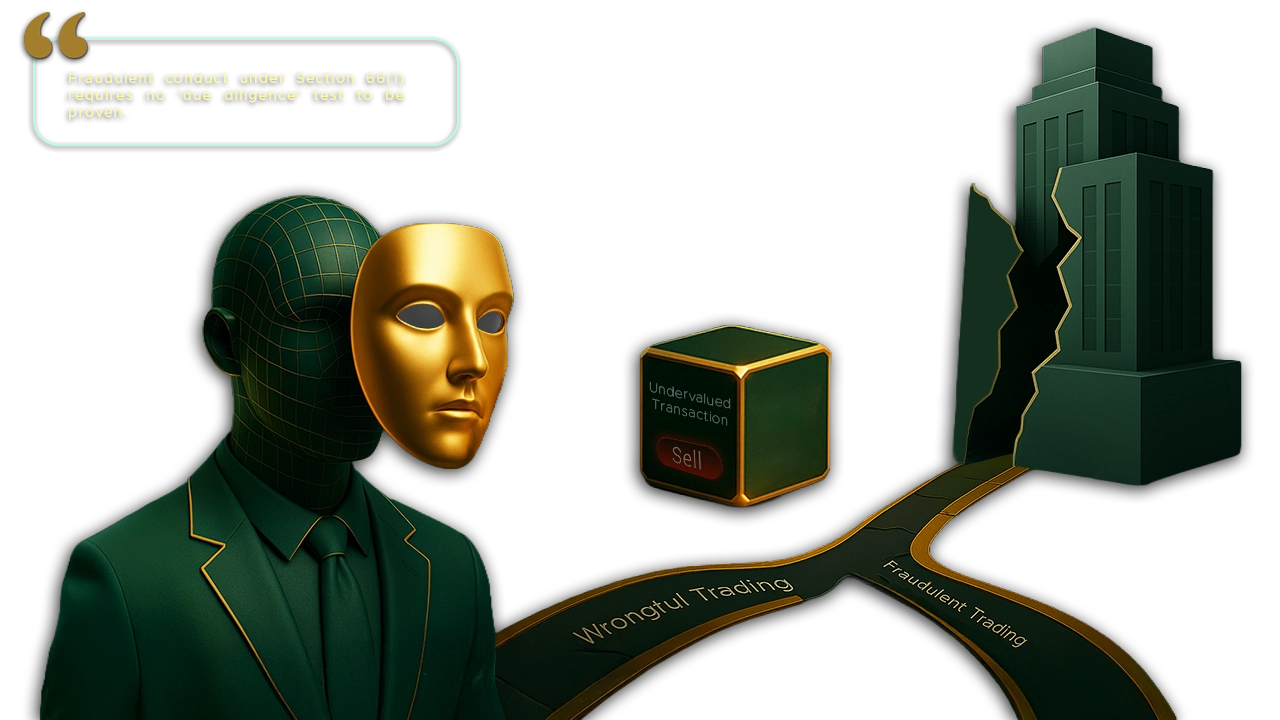Introduction
In the intricate landscape of intellectual property, securing a patent in India hinges on a triad of fundamental requirements: novelty, inventive step, and industrial application. Among these, the “inventive step” stands as a particularly formidable and universally scrutinised hurdle. It demands nothing less than a significant “leap” beyond the existing body of knowledge, transcending mere incremental adjustments or the predictable evolution of an innovation that any skilled individual might readily conceive. This foundational principle finds its historical resonance in the venerable U.S. case of Hotchkiss v. Greenwood1, which sought evidence of “more ingenuity and skill were possessed by an ordinary mechanic acquainted with the business”.
To bring a measure of objectivity to this inherently subjective assessment of a “sufficient leap,” patent law introduced a crucial hypothetical figure: the “Person Having Ordinary Skill in the Art” (PHOSITA). The idea is simple: if this hypothetical expert, with their practical knowledge, would find the invention’s “leap” too small or predictable, then it’s considered obvious and cannot be patented. This report will delve into the inventive step as it applies in India, examining the specifics of the Teaching, Suggestion, Motivation (TSM) test, comparing how different legal systems approach obviousness, and critically analysing how the adoption of legal concepts from other nations impacts the integrity and quality of patents granted within India.
The Nuances of Non-Obviousness: A Jurisdictional Review
Inventive step, also known as non-obviousness, is a fundamental criterion for patentability that varies significantly across different legal jurisdictions. This flexibility is permitted under the TRIPS Agreement, allowing member states to tailor their patent standards to their specific policy goals. India, for instance, has adopted a more stringent approach to inventive step, which is codified in Section 2(1)(ja) of the Patents Act, 1970. This provision uniquely requires an invention to not only be “not obvious to a person skilled in the art” but also to demonstrate a “technical advance as compared to the existing knowledge or having economic significance or both.” This dual requirement serves as a higher bar for innovation, ensuring that patents are granted for truly substantive advancements rather than mere incremental changes.
This rigorous interpretation of inventive steps has been upheld and clarified by Indian courts in landmark decisions. The Supreme Court in Novartis AG v Union of India & Ors2. and the Madras High Court in Microsoft Technology Licensing LLC v Assistant Controller of Patents and Designs3 have affirmed that an invention must exhibit a tangible “technical advance” that goes beyond a simple “difference” from existing knowledge. This Judicial emphasis on substantive progress ensures that the Indian patent system promotes genuine innovation, particularly in sectors like pharmaceuticals, where the patenting of minor modifications to known substances is a major concern.
In contrast, other major patent jurisdictions, such as the United States, Europe, and the United Kingdom, employ a less restrictive approach. U.S. patent law, under Section 103, focuses on whether the “differences” between the invention and prior art would have been obvious to a “person having ordinary skill in the art (PHOSITA).” Similarly, the European Patent Convention (EPC) and U.K. patent law define inventive steps as not being “obvious to a person skilled in the art” based on the “state of the art,” without the explicit Indian criteria of “technical advance” or “economic significance.” This difference in standards means that an invention that might be patentable in the U.S. or Europe due to minor changes could face rejection in India for failing to demonstrate a sufficient technical or economic leap.
The “Person Skilled in the Art” (PSA/PHOSITA): A Critical Interpretive Lens
The hypothetical “Person Skilled in the Art” (PSA) or “Person Having Ordinary Skill in the Art” (PHOSITA) is central to assessing inventive steps, but its characteristics differ significantly by jurisdiction. English law describes its “skilled man” as “unimaginative”, while U.S. law uses “person having ordinary skill in the art” implying average knowledge.
Crucially, Section 2(1)(ja) of Indian patent law omits the word “ordinary” when referring to the “person skilled in the art”. Indian courts, including the erstwhile IPAB in Enercon (India) Ltd. v Aloys Wobben4 and the Madras High Court in Rhodia Operations v Assistant Controller of Patents and Designs5, have emphasized that the Indian PSA is not “ordinary” or “average.” Instead, this PSA is “greater than average,” capable, imaginative though not inventive, well-read, and experienced positioned “just one notch below the inventor”. This capable PSA can combine prior arts without “near-express instructions”.
Indiscriminate borrowing of the “ordinary” qualifier from foreign jurisprudence risks “dumbing down” the Indian PSA, leading to a lower inventive step standard. This can result in patents being granted for inventions that do not meet India’s rigorous “technical advance” or “economic significance” requirements, ultimately compromising the quality of innovation.
The Teaching, Suggestion, Motivation (TSM) Test
The Teaching, Suggestion, Motivation (TSM) test originated in U.S. patent jurisprudence, notably in Application of Bergel, to bring uniformity to obviousness determinations. Its rationale is that combining known elements is only obvious if there’s a “motivation or suggestion to combine” from prior art, the problem itself, or common knowledge. Cases like Winner Int’l Royalty Corp. v. Wang6 applied this, requiring a suggestion to combine elements for obviousness.
However, the U.S. Supreme Court in KSR International Co. v. Teleflex Inc7. cautioned against rigid application of TSM, calling it a “helpful insight” but not a “rigid and mandatory formula”. The Court emphasized that market demand, problem nature, or common sense can drive combinations, not just explicit prior art instructions. Granting patents for advancements that occur “in the ordinary course without real innovation retards progress”.
For Indian jurisprudence, KSR’s caution is highly relevant. Given India’s more capable and imaginative PSA, a rigid TSM application is inappropriate, as the Indian PSA would not require prior art to “near-expressly” show or teach, suggest and motivate how they have to be combined.
Other Tests for Inventive Step and Their Application in India
Other tests for inventive steps, like the U.K. ‘s Windsurfing Test and the U.S.’s Graham analysis, also present challenges when borrowed into Indian law. The Windsurfing Test focuses on “differences” and describes the skilled addressee as “unimaginative”. This conflicts with India’s requirement for “technical advance” and its more capable, imaginative PSA. Similarly, the Graham analysis, with its focus on “differences” and “ordinary skill,” faces similar issues.
While “mosaicing”, combining multiple prior art documents is permissible across jurisdictions, including India, to assess obviousness, avoiding hindsight bias is critical. The assessment must be from the perspective of the skilled person before the invention existed.
Indian judicial approaches have varied. The Roche DB Test (Delhi High Court, 2015) has been criticized for using an “ordinary” skilled person and focusing on “differences,” which dilutes the rigor of Indian law. More recent judgments, like Agriboard International LLC v Deputy Controller of Patents and Designs8 and NHK Spring Co Ltd v Controller of Patents and Designs9, emphasize rigorous examination, holistic views, and the need for “technical advancement over the prior art”. The Madras High Court’s five-step inquiry, while structurally similar to Windsurfing, is applied with the understanding of the distinct, more capable Indian PSA. The challenge remains in avoiding indiscriminate borrowing that dilutes India’s unique statutory requirements.
Conclusion
The inventive step is vital for distinguishing true innovation. Indian patent law uniquely requires “technical advance or economic significance” and defines a “person skilled in the art” as capable and imaginative, not “ordinary”. This distinct framework necessitates an Indian-centric interpretation, avoiding indiscriminate borrowings from U.S. and U.K. jurisprudence that could “dumb down” the Indian PSA and lower the inventive step standard. Such dilution risks granting patents for inventions that do not meet India’s rigorous requirements, impacting the quality of innovation. The evolving Indian jurisprudence, with its nuanced interpretations, reflects a growing confidence in asserting its unique identity within global IP, prioritizing substantive innovation and social welfare.
Citations
- Hotchkiss v. Greenwood 52 U.S. 248 (1850)
- Novartis AG v Union of India & Ors. (2013) 6 SCC 1
- Microsoft Technology Licensing LLC v Assistant Controller of Patents and Designs 2024: MHC: 1009
- Enercon (India) Ltd. v Aloys Wobben ORA/08/2009/PT/CH
- Rhodia Operations v Assistant Controller of Patents and Designs 2024: MHC: 6024
- KSR International Co. v. Teleflex Inc. 127 S.Ct. 1727 (2007)
- Agriboard International LLC v Deputy Controller of Patents and Designs 2022:DHC:1206
- NHK Spring Co Ltd v Controller of Patents and Designs C.A. (Comm. IPD-PAT) 296 of 2022, order dated 08 February 2024.
Expositor(s): Adv. Archana Shukla






